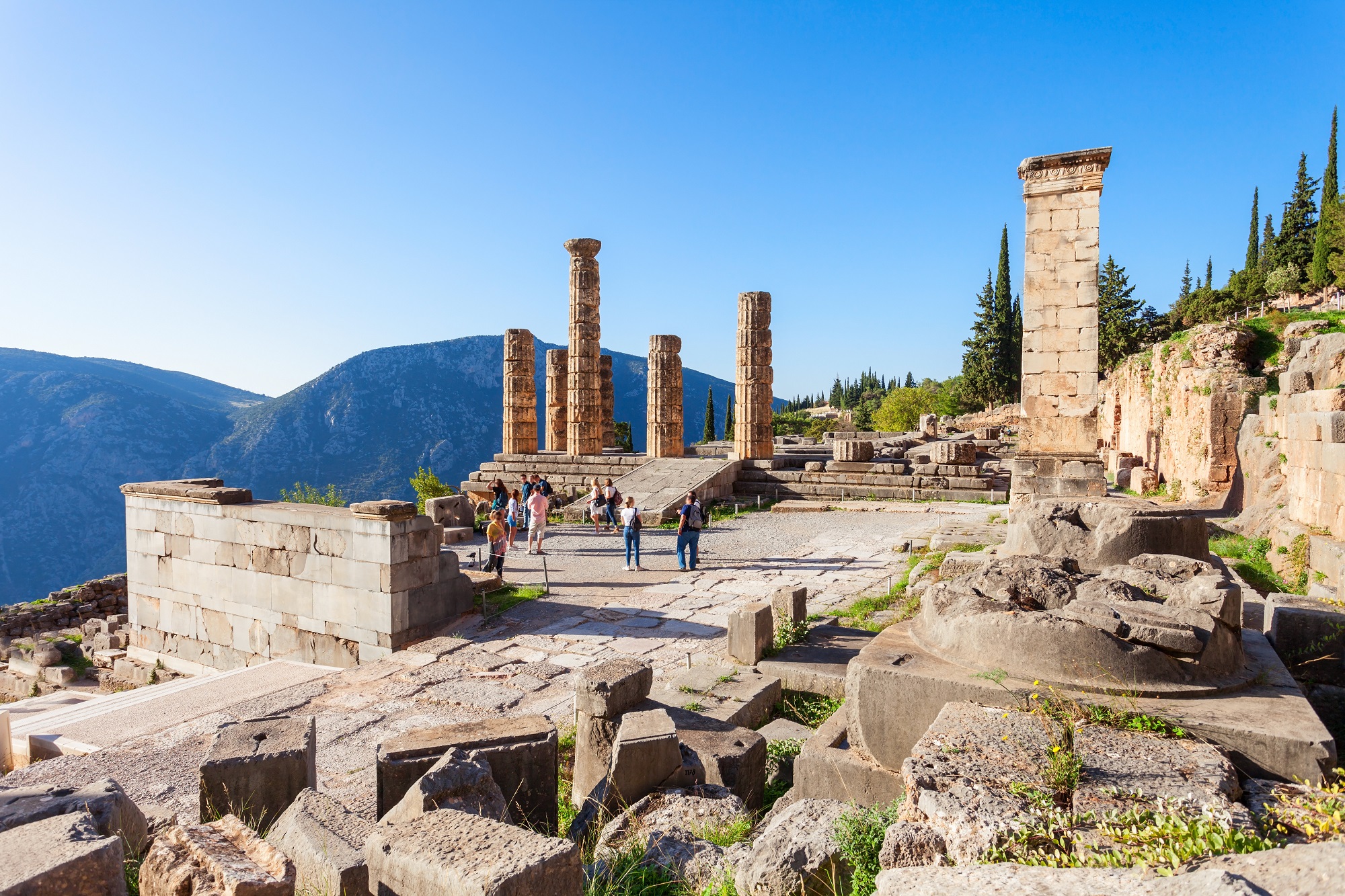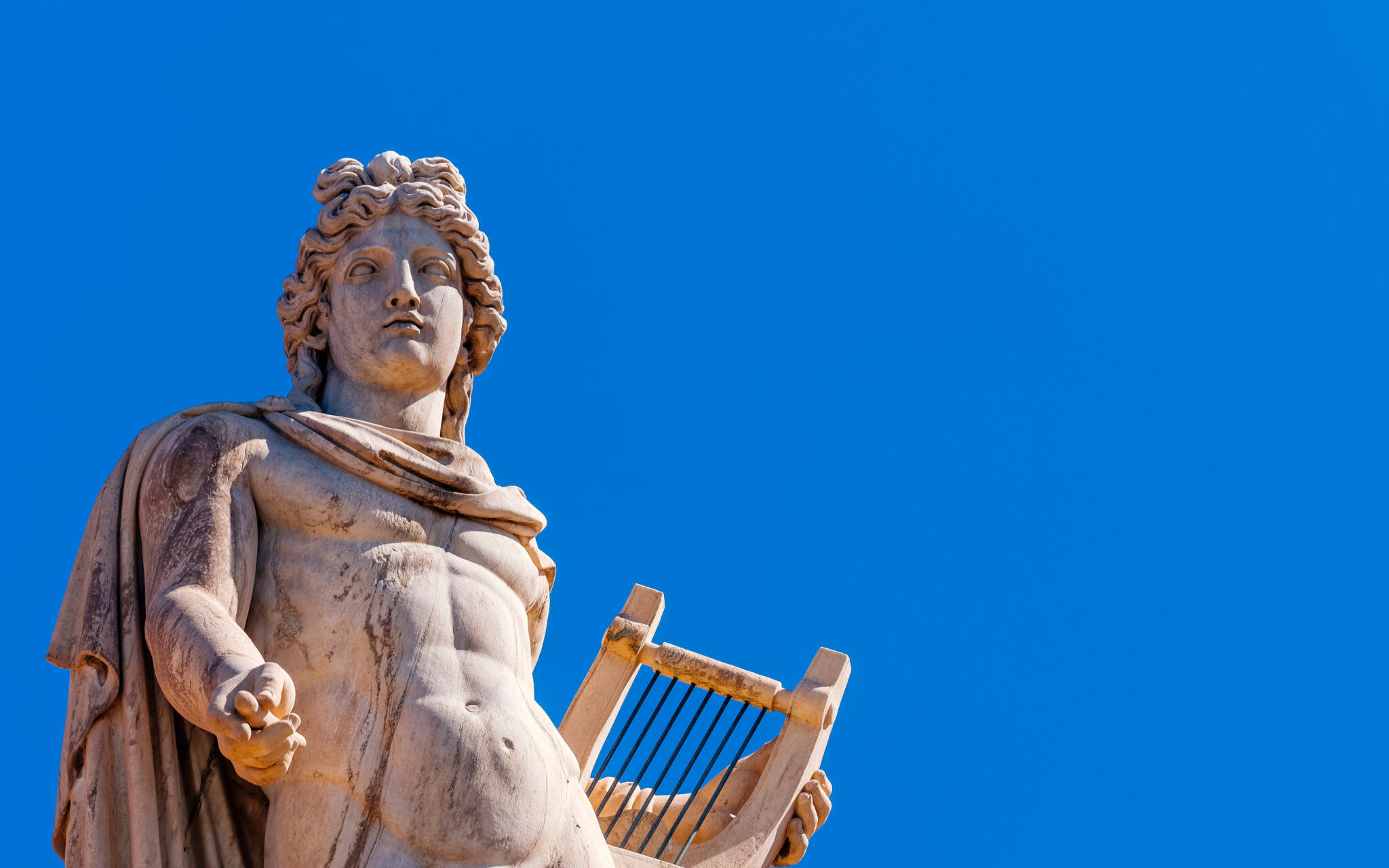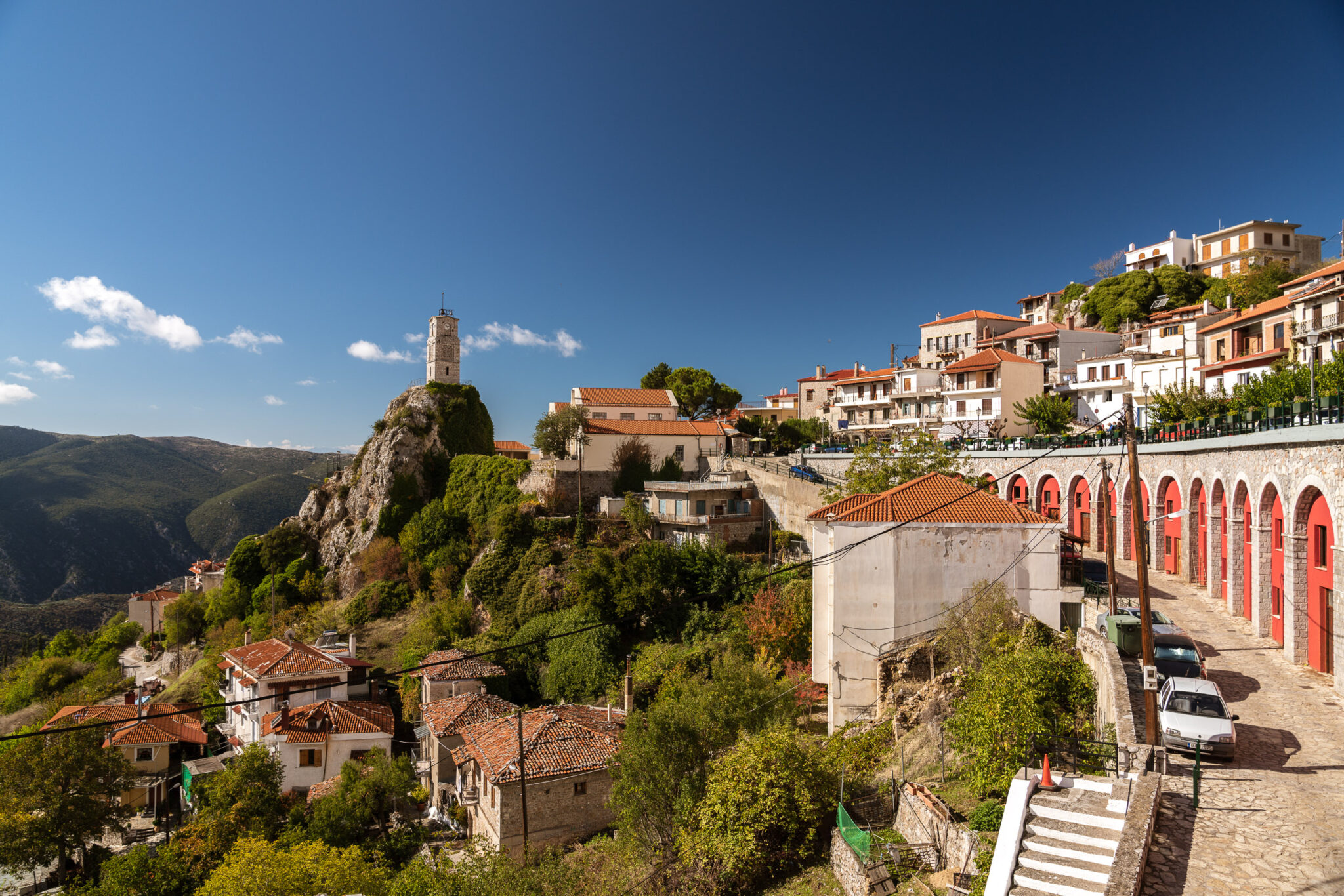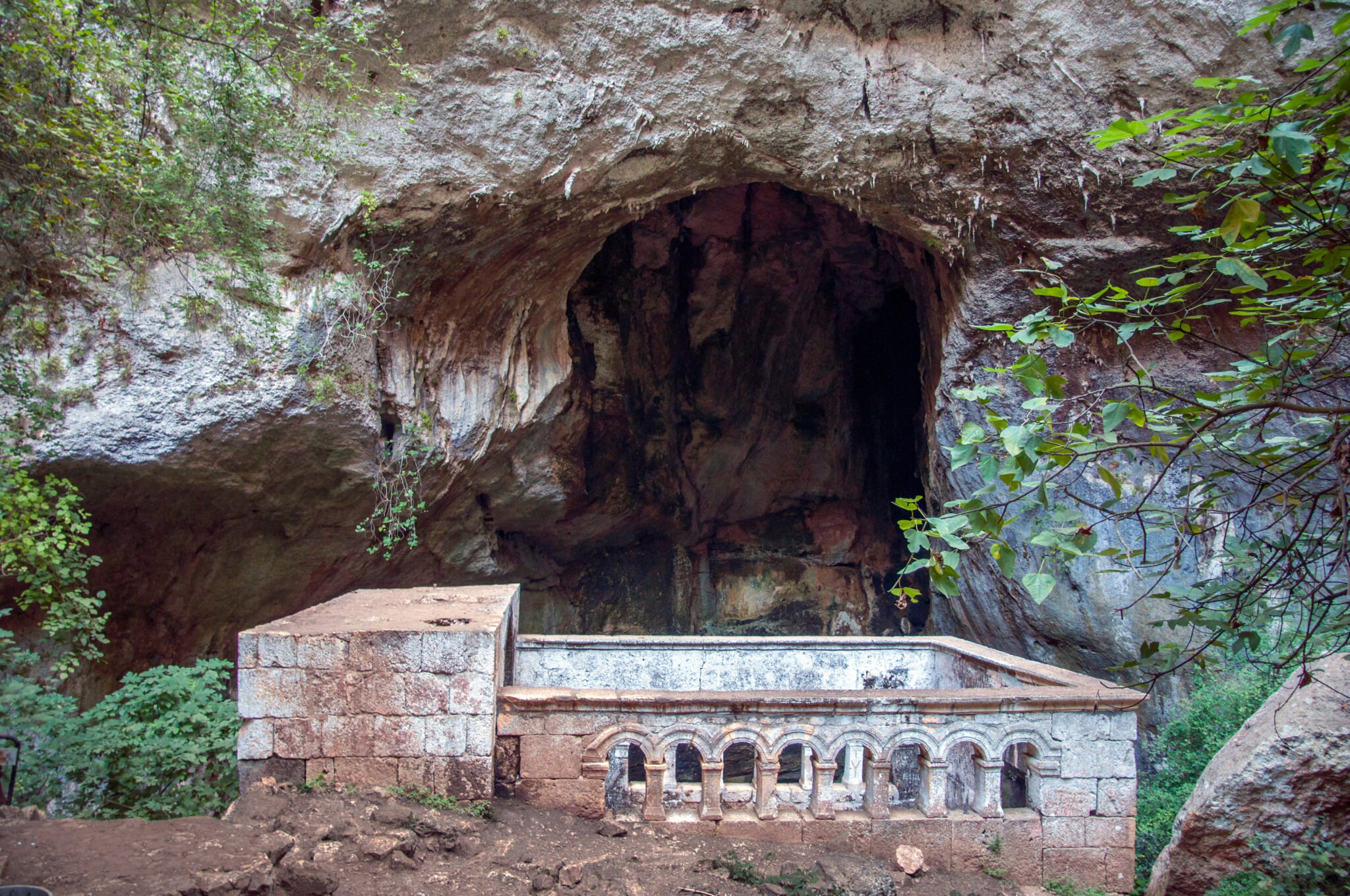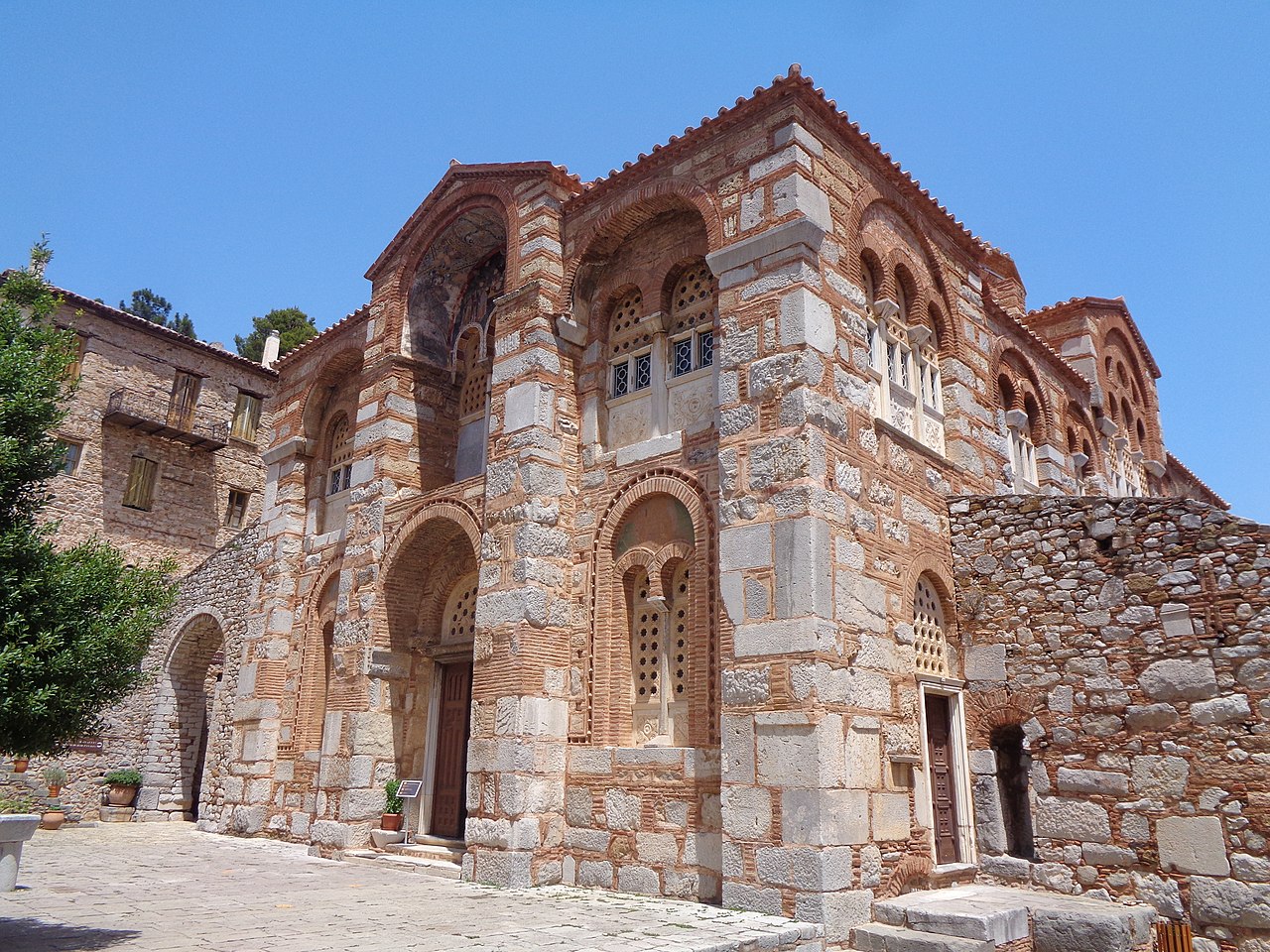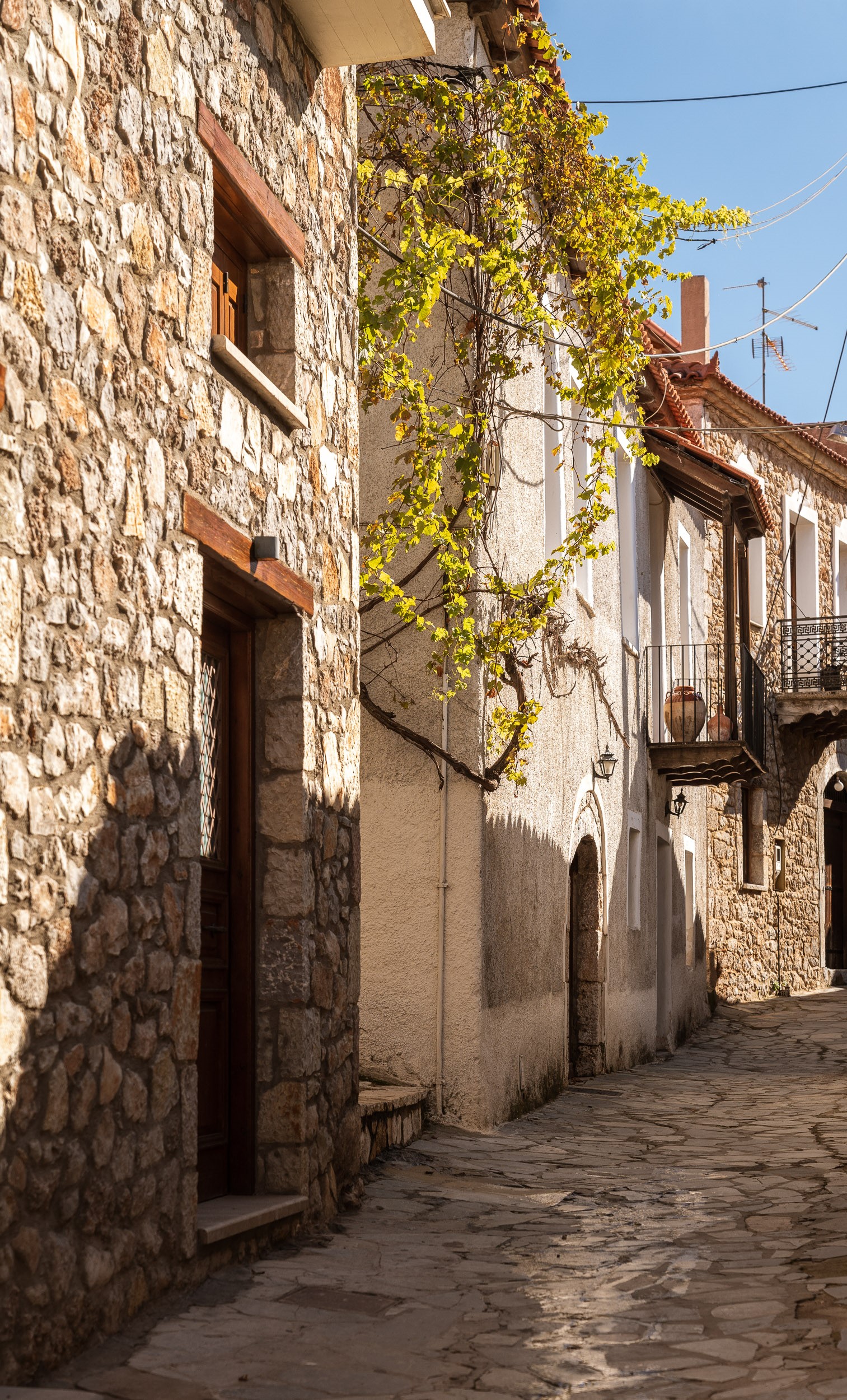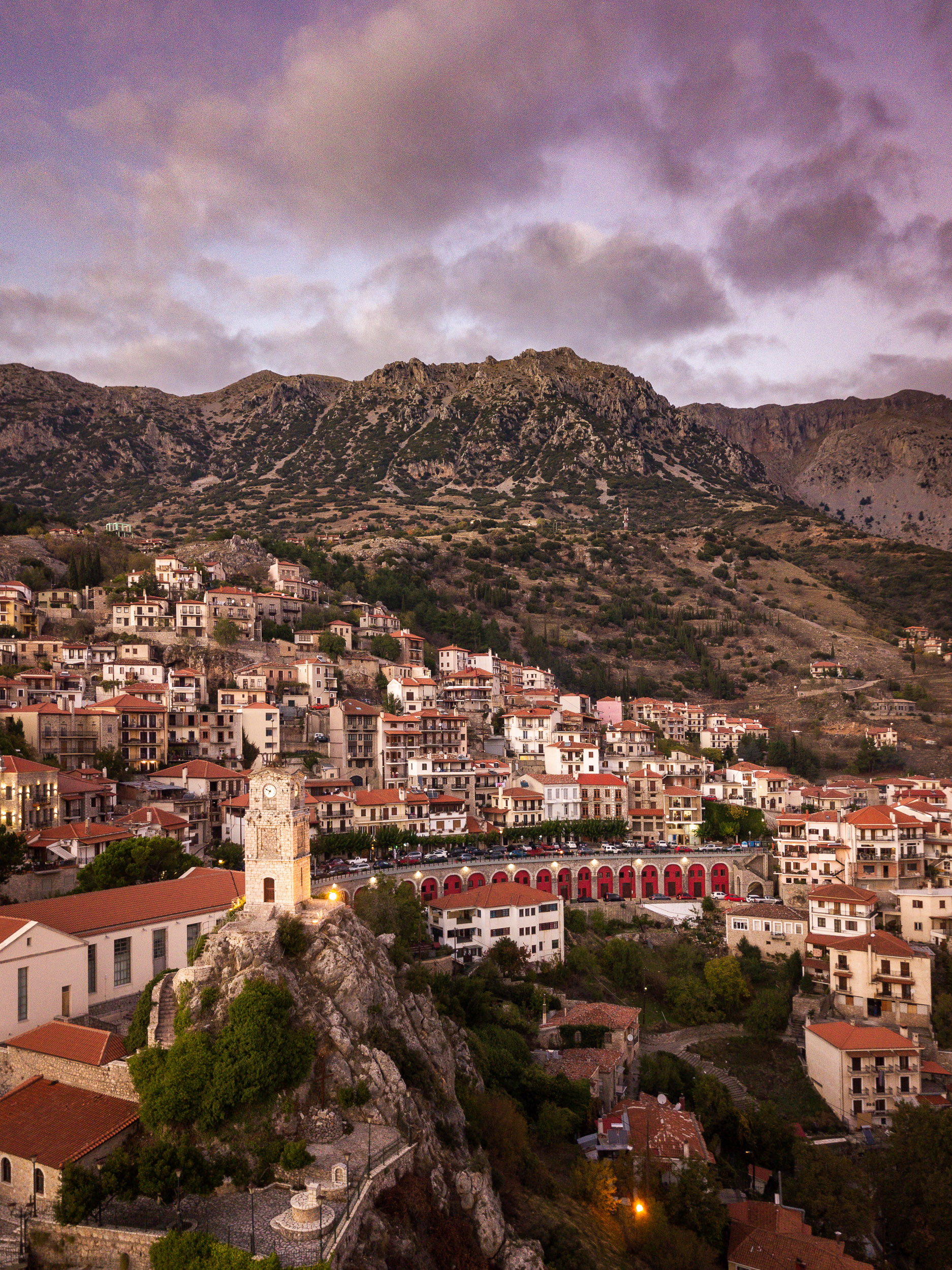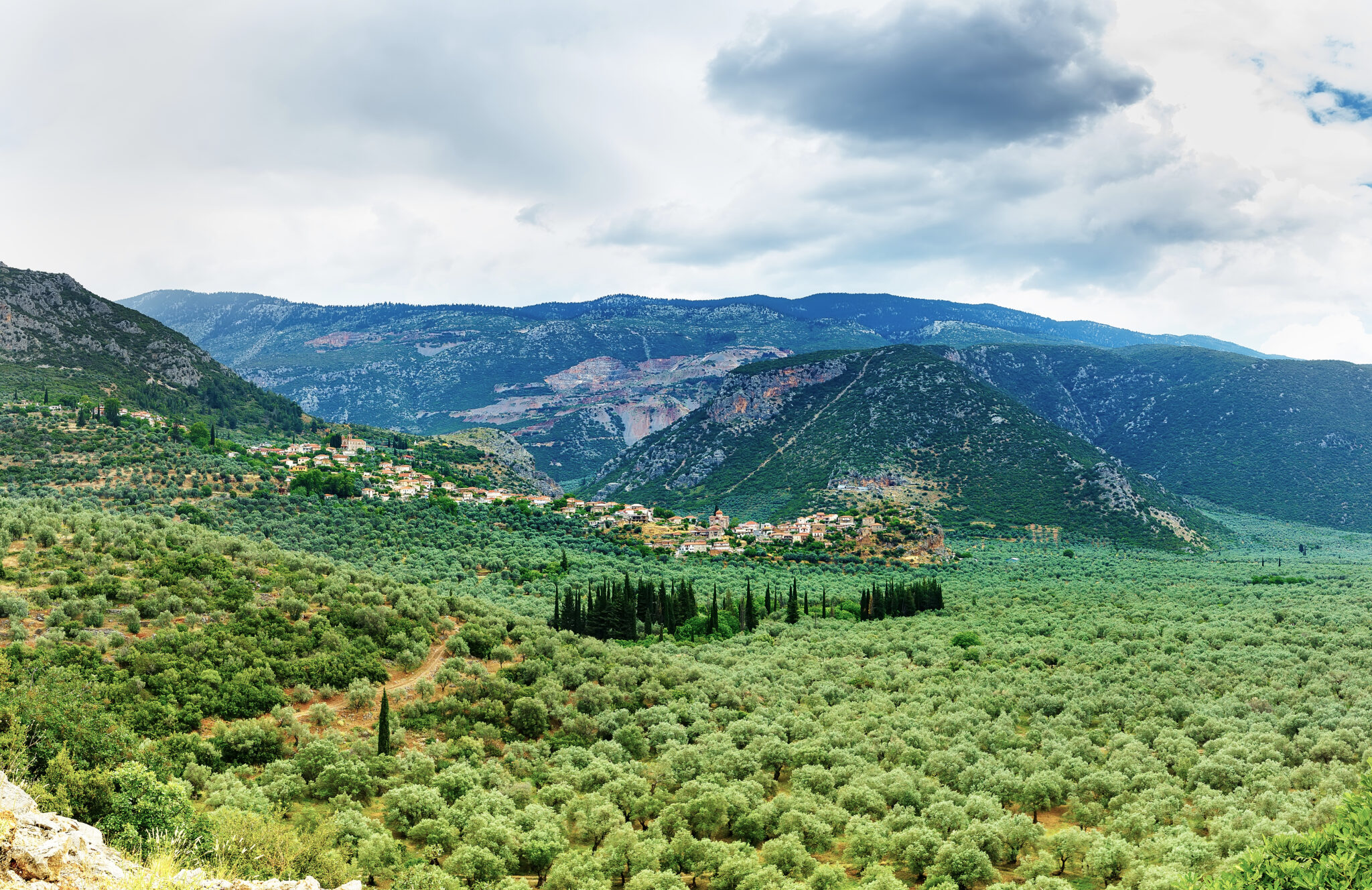Delphi is an unmissable destination in Greece, as the birthplace of the legendary Oracle of Apollo and known as the “navel of the world”. Delphi’s significance is further underlined by the fact that it hosted one of the four Panhellenic Games of Ancient Greece, the Pythian Games. UNESCO has recognized Delphi as a “unique artistic achievement” and “magical” site, solidifying its status as a must-see location for anyone visiting Greece
There are numerous things to see and do in and around Delphi, and here are some top recommendations for the best things to see close to the town. So after marveling at the ancient ruins, including the Temple of Apollo, the Sanctuary of Athena, the Treasury, the ancient Theatre, and the stadium where the Pythian Games were held. Take a hike to the nearby Corycian Cave, a place of worship for the goat-like god Pan and the Nymphs, and admire the natural sculptures formed by the stalactites and stalagmites.
Explore the charming village of Arachova, a popular winter destination known for its authentic character, traditional taverns, and shops selling local products. Visit the Arachova Folklore Museum, which features an exact replica of an ancient loom similar to the one used by Penelope in Homer’s Odyssey to weave Laerte’s burial shroud.
For those seeking even more historical and cultural immersion, head to the nearby town of Amfissa and its Archaeological Museum, which showcases the complete picture and historical evolution of the region in ancient times. Alternatively, explore the mysterious neighborhood of Harmena, which is famous for its tanning tradition and hosts the annual Ghost of Harmena festival.
Consider renting an Avis car to visit Delphi, allowing you to fully appreciate the stunning and intriguing surroundings encompassing this sacred location.
Corycian Cave
For avid hikers, the Corycian Cave is an essential experience when visiting Delphi. Nestled in a serene forest of fir trees and picturesque vistas on the southwestern side of Parnassus, this cave was a significant place of worship for the goat-esque god Pan and the Nymphs. According to ancient Greek mythology, the cave was named after the Nymph Corycia, who was one of Apollo’s many companions. The trail to the cave, part of the European path E4, begins at Delphi, next to the Museum of Delphic Festivals.
The trek takes roughly 3.5 hours, but visitors on a tight schedule can reach the cave by car. Upon arrival, visitors are treated to natural sculptures formed by the stalactites and stalagmites, as well as the opportunity to experience the ancient ritual of pilgrimage that once led believers to seek answers from the Oracle of Apollo in Delphi. Even today, the cave hosts occasional ceremonies and libations, maintaining a tradition that has been ongoing for thousands of years.
Local residents also refer to the cave as “Sarandavli,” meaning “forty flutes” in Greek, because of the magnificent acoustics in the cave’s first large chamber. Legend has it that a tunnel led from the cave to the sanctuary of Apollo in Delphi. This awe-inspiring cave experience is an essential addition to any Delphi itinerary.
The Hosios Loukas Monastery
Unveil the mystical world of Byzantine architecture and ornamentation with a visit to the Hosios Loukas Monastery, a historical and cultural gem located on the western slopes of Mount Helicon. This UNESCO World Heritage Site is a rare surviving example of medieval Byzantine architecture in Greece, and one of only three monasteries from that period still standing. The complex features two Byzantine churches, each adorned with a breathtaking display of frescoes and mosaics that speak to the monastery’s rich history and cultural significance.
The older church, an immaculate masterpiece of Byzantine architecture, is dedicated to the Virgin Mary, while the newer church is dedicated to its founder, St. Luke of Steiris (Hosios Loukas). Standing on the same land where Narcissus fell in love with his own reflection, the monastery offers visitors the chance to immerse themselves in both history and mythology. Don’t miss the opportunity to explore the crypt beneath the Katholicon, where you can witness an unforgettable showcase of Byzantine artistry. The Hosios Loukas Monastery is a must-visit destination for architecture enthusiasts and culture aficionados alike, offering a unique window into Greece’s fascinating history.
Arachova
Discover the charming village of Arachova, located just a ten-minute drive from Delphi. Probably the most popular winter destination in Greece, Arachova owes its popularity to its proximity to the country’s most famous skiing centre. The village’s main street is a bustling hub of local products, taverns, and cafes, surrounded by picturesque stone-built alleys that form the village’s heart. As delicacies are prepared in the village’s traditional taverns, the scent of burning fireplaces fills the air. Despite its growing popularity, Arachova has maintained its authenticity and still exudes the true character of a Greek mountain village.
The village has a rich history in the art of weaving, and just behind the famous Clock, you’ll find the Arachova Folklore Museum. The museum features an exact replica of an ancient bronze-age loom, similar to the one used by Penelope in Homer’s Odyssey to weave Laerte’s burial shroud to delay her suitors. The museum also boasts a collection of carpets from the last century, Greek and foreign magazines showcasing ancient and modern culture, as well as an extensive collection of historical and photographic archives documenting Arachova and its residents through the 19th and 20th centuries.
The Archaeological Museum of Amfissa
Step back in time just a 20-minute drive from Delphi to the town of Amfissa. With its well-curated exhibits and exceptional insights into the everyday life of the ancient Greeks, the Archaeological Museum of Amfissa is a must-visit for history buffs and culture vultures alike. Named after the mistress of god Apollo, this historic town offers a rich window into the ancient past. At the Archaeological Museum of Amfissa, housed in the building where the First National Assembly of Greece was held during the Greek War of Independence, you can discover the region’s historical evolution in ancient times.
Discover artifacts and finds from the Bronze Age that were unearthed in Amfissa and other sites in the Phocis region. The museum offers a fascinating glimpse into daily life for ancient Greeks, including the role of men and women, their social position, and their routine activities. From the adornment of women and the fashion of the time to the food games and education of children, the exhibits present an illuminating view of the society’s daily life. Artifacts, include everything from pottery and sculpture to jewelry and coins.
Spirits of Love and misfortune in Harmena
Step into the world of historic Greece by visiting the charming and mysterious neighborhood of Harmena, located near the Archaeological Museum in Amfissa. The village is renowned for its tanning tradition, which is still practiced by the last remaining tanners in the region. The annual Ghost of Harmena festival is also a must-see, where supernatural creatures take over the town’s streets during the Greek carnival.
The story behind the festival is centered around the tragic love story of Constantis and Lenio, and it has become a cherished part of the town’s folklore. Take a stroll around the picturesque alleys and search out the only café-tavern in the area and the owner Mr. Ilias who will happily share the tragic legend of the desperate lovers while you munch on some his homemade delicacies.
Read also:
Delphi: Your Journey to the Centre of the World



